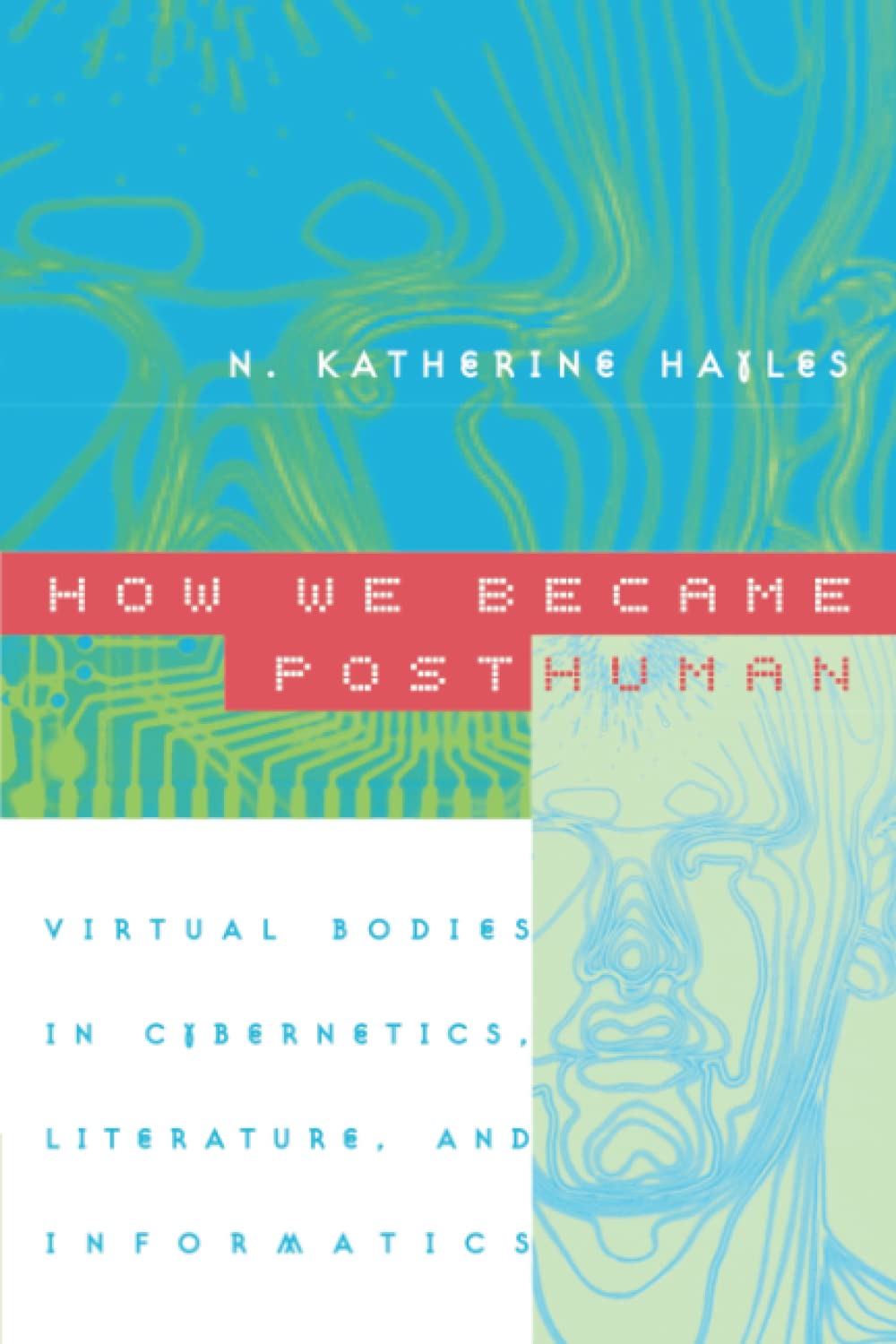
Title

How We Became Posthuman: Virtual Bodies In Cybernetics, Literature, And Informatics,Used
Processing time: 1-3 days
US Orders Ships in: 3-5 days
International Orders Ships in: 8-12 days
Return Policy: 15-days return on defective items
In This Age Of Dna Computers And Artificial Intelligence, Information Is Becoming Disembodied Even As The 'Bodies' That Once Carried It Vanish Into Virtuality. While Some Marvel At These Changes, Envisioning Consciousness Downloaded Into A Computer Or Humans 'Beamed' Star Trekstyle, Others View Them With Horror, Seeing Monsters Brooding In The Machines. In How We Became Posthuman, N. Katherine Hayles Separates Hype From Fact, Investigating The Fate Of Embodiment In An Information Age.Hayles Relates Three Interwoven Stories: How Information Lost Its Body, That Is, How It Came To Be Conceptualized As An Entity Separate From The Material Forms That Carry It; The Cultural And Technological Construction Of The Cyborg; And The Dismantling Of The Liberal Humanist 'Subject' In Cybernetic Discourse, Along With The Emergence Of The 'Posthuman.'Ranging Widely Across The History Of Technology, Cultural Studies, And Literary Criticism, Hayles Shows What Had To Be Erased, Forgotten, And Elided To Conceive Of Information As A Disembodied Entity. Thus She Moves From The Postworld War Ii Macy Conferences On Cybernetics To The 1952 Novel Limbo By Cybernetics Aficionado Bernard Wolfe; From The Concept Of Selfmaking To Philip K. Dick'S Literary Explorations Of Hallucination And Reality; And From Artificial Life To Postmodern Novels Exploring The Implications Of Seeing Humans As Cybernetic Systems.Although Becoming Posthuman Can Be Nightmarish, Hayles Shows How It Can Also Be Liberating. From The Birth Of Cybernetics To Artificial Life, How We Became Posthuman Provides An Indispensable Account Of How We Arrived In Our Virtual Age, And Of Where We Might Go From Here.
⚠️ WARNING (California Proposition 65):
This product may contain chemicals known to the State of California to cause cancer, birth defects, or other reproductive harm.
For more information, please visit www.P65Warnings.ca.gov.
- Q: What is the main theme of 'How We Became Posthuman'? A: The main theme of 'How We Became Posthuman' is the exploration of how information has evolved to become disembodied in the context of technology and culture, and how this transformation affects our understanding of embodiment and identity.
- Q: Who is the author of this book? A: The author of 'How We Became Posthuman' is N. Katherine Hayles, a prominent scholar in the fields of literature, technology, and cultural studies.
- Q: What type of binding does this book have? A: 'How We Became Posthuman' is available in paperback binding, making it a flexible and portable option for readers.
- Q: How many pages does the book contain? A: 'How We Became Posthuman' consists of 364 pages, providing an in-depth analysis of its themes.
- Q: When was 'How We Became Posthuman' published? A: 'How We Became Posthuman' was published on February 15, 1999.
- Q: Is this book suitable for academic study? A: Yes, 'How We Became Posthuman' is suitable for academic study, particularly in fields like cultural studies, cybernetics, and literary criticism.
- Q: What are some of the topics discussed in the book? A: The book discusses various topics including the conceptualization of information as separate from material forms, the cultural construction of the cyborg, and the implications of cybernetic discourse on the understanding of the human subject.
- Q: Can this book be beneficial for understanding modern technology? A: Yes, the insights provided by Hayles in 'How We Became Posthuman' can be beneficial for understanding the implications of modern technology, including artificial intelligence and virtual reality.
- Q: Is there any specific historical context covered in the book? A: Yes, Hayles covers a range of historical contexts, including the post-World War II Macy Conferences on cybernetics and various cultural narratives that emerged alongside technological advancements.
- Q: What is the significance of the term 'posthuman' in this book? A: In 'How We Became Posthuman', the term 'posthuman' signifies a shift in understanding identity and existence in an age where technology blurs the lines between human and machine, raising questions about embodiment and consciousness.

